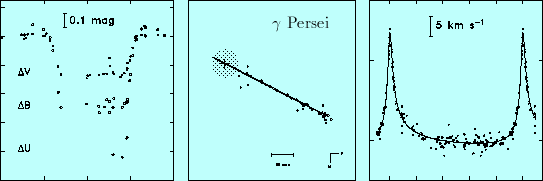Observing Opportunities & Requests
As we all know, there are many doubles to observe and few of us to observe them! Following a
great suggestion by Vakhtang Tamazian, we are attempting an experiment that may invite more
collaboration among our group. In this section of the Commission 26 webpage, observers (amateur
or professional) may advertise their upcoming observing runs or ongoing projects and invite
anyone who wishes to participate. These may range from requests for a few observations to
proposals for major collaborations. In addition, anyone who has a few specific objects in need
of observation may post a request for either archival or new data.
Information to be included on upcoming observing runs should include:
- Date and duration (preferably a few months in advance)
- Telescope size, location, and instrumentation (CCD, lucky imaging, speckle, RV, etc.)
- Limiting magnitude and dynamic range (delta m), wavelength range or photometric bands
- Resolving power of the telescope and spectrograph (R), if spectroscopy
- The option to participate in the run: "yes" or "no". If "yes", the possibility of any kind of
support (further details to be arranged with the contact person)
- Contact person: name, email/postal address(es)
Information to be included on data requests should include:
- Object name(s), coordinates, magnitudes
- Type of data needed: astrometry, spectroscopy, photometry, etc.
- Other relevant information (for example, predicted periastron or occultation timings, etc.)
Publication arrangements for any measures obtained will probably vary, depending on the size of
the contribution, and should be worked out on a case-by-case basis between requester and observer.
Observations may be requested for the following programs:
- Student Double Star Speckle Interferometry Program
- Date: ongoing
- Telescopes: numerous
- Camera: Andor Luca-S EMCCD, Rc filter, no atmospheric dispersion correction
- Separation: 0.4" < sep > 10.0"
- Limiting magnitude: V<11, DV<3 (less at separations close to the magnitude limit)
- Paper describing program and results on previous run this telescope on request
- Contact person: Russ Genet, russmgenet[at]aol.com
- USNO Speckle Program
- Date: ongoing
- Telescope: USNO 26inch (66cm) refractor, Washington, DC (lat. 38.921, long. -77.067); speckle
- Limiting magnitude V < 11.5, dV < 3 (less at separations close to limit)
- dec > -15, 0.5" < sep < 50",
- Option to participate: yes, but limited. No restriction on number of objects (within reason!)
- Contact person: Brian Mason, brian.d.mason.civ[at]us.navy.mil


 IAU Commission G1: Binary and Multiple Star Systems
IAU Commission G1: Binary and Multiple Star Systems